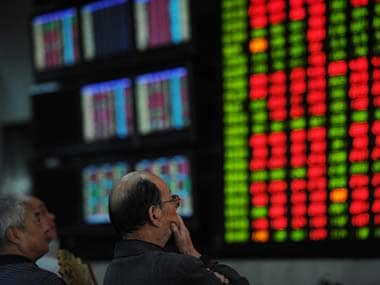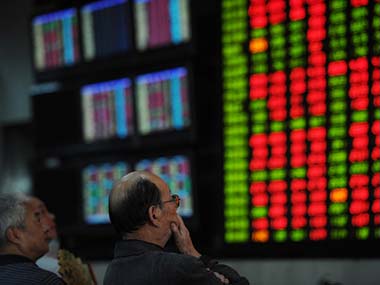Sydney: Asian markets skidded again on Tuesday after Wall Street suffered its biggest one-day loss since the 2008 financial crisis, but the selling was restrained by hopes for coordinated policy action to quell the panic. Speculation of more central bank rate cuts and possible fiscal stimulus saw US Treasury yields edge up from historic lows, and oil prices paused after the steepest fall since the 1991 Gulf war. “The collapse in oil prices and associated credit concerns for producers have added another negative layer to a market already on its knees over the COVID-19 outbreak,” said Rodrigo Catril, a senior FX strategist at National Australia Bank. “Talk of coordinated fiscal and monetary support is getting louder,” he added, noting US President Donald Trump was promising “major” steps to support the economy. Trump plans a news conference later on Tuesday to lay out proposed measures and dealers reported rumours Treasury Secretary Steve Mnuchin was touting major steps including buying non-Treasury fixed income assets. Investors seemed to take heart with E-Mini futures for the S&P 500 rallying 1.1 percent after an early slide. [caption id=“attachment_2414284” align=“alignleft” width=“380”]  Representational image. AFP[/caption] Japan’s Nikkei was still down 2.8 percent, but futures had come well off their lows. MSCI’s broadest index of Asia-Pacific shares outside Japan lost 0.3 percent. Wall Street had been on the brink of a bear market with all the major indices down almost 20 percent from their all-time peak, which amazingly were touched just 13 sessions ago. The Dow fell an eye-watering 7.79 percent, while the S&P 500 lost 7.60 percent and the Nasdaq 7.29 percent. All 11 major sectors of S&P 500 ended the session deep in the red, with energy and financials taking the worst hit. Energy stocks led the losses globally after Brent crude futures closed down 24 percent as markets braced for a price war between Saudi Arabia and Russia. US crude did bounce $1.25 to $32.38 on Tuesday, though that followed a 24 percent plunge overnight. Headlines on the coronavirus were no brighter with Italy ordering everyone across the country not to move around other than for work and emergencies, while banning all public gatherings. “Although uncertainty is very high, we now expect similar restrictions will be put in place across Europe in the coming weeks,” warned economists at JPMorgan. “We are now expecting a rolling 1H20 global growth contraction and a powerful global disinflationary wave to take hold,” they added. “We expect the Fed to cut to zero at or before its March 18 meeting.” Central bank circuit breaker Such has been the conflagration of market wealth, that analysts assumed policy makers would have to react aggressively to prevent a self-fulfilling economic crisis. “Without a circuit-breaker, there is a risk the volatility tightens global financial conditions and weakens economies,” said Kim Mundy, an international economist at CBA. “Because of the risks, we expect central banks to cut policy interest rates further as well as use other, unconventional, monetary policy tools.” The US Federal Reserve on Monday sharply stepped up the size of its fund injections into markets to head off stress. Having delivered an emergency rate cut only last week, investors are fully pricing an easing of at least 75 basis points at the next Fed meeting on March 18, while a cut to near zero was now seen as likely by April. Britain’s finance minister is due to deliver his annual budget on Wednesday and there is much talk of coordinated stimulus with the Bank of England. The European Central Bank meets on Thursday and will be under intense pressure to act, even though rates there are already deeply negative. Bonds have charged ahead of the central banks to essentially price in a global recession of unknown length. Yields on 10-year US Treasuries reached as low as 0.318 percent on Monday, a level unthinkable just a week ago, before rising to 0.63 percent on Tuesday. The dive in yields and Fed rate expectations had put an end to a multi-year uptrend for the dollar, though it was finding some support in early trading. The dollar edged up to 102.76 yen, having shed 2.8 percent overnight in the largest one-day drop since late 2016. Chart support was put around 101.20 but that still might not stop a retreat to the next major bear target at 100.00. The euro was holding at $1.1421, after climbing 1.4 percent on Monday to the highest in over 13 months at $1.1492. Gold was restrained to $1,668.20 per ounce amid talk some investors were having to sell to raise cash to cover margin calls in stocks and other assets.
Speculation of more central bank rate cuts and possible fiscal stimulus saw US Treasury yields edge up from historic lows, and oil prices paused after the steepest fall since the 1991 Gulf war.
Advertisement
End of Article


)

)
)
)
)
)
)
)
)



